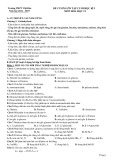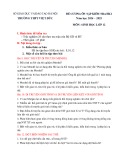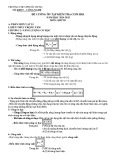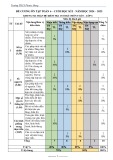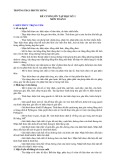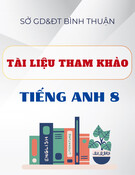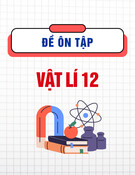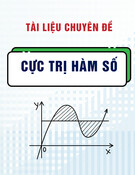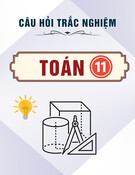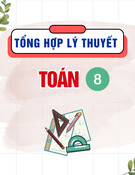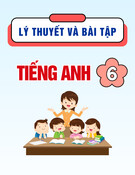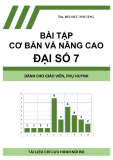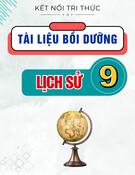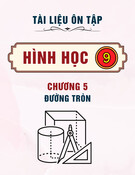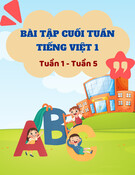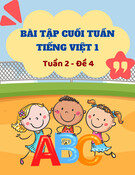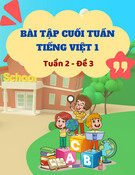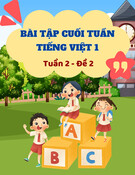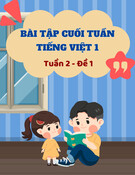
TRƯỜNG THPT HOÀNG VĂN THỤ
MÔN : TIẾNG ANH
ĐỀ CƯƠNG ÔN HỌC KỲ I- KHỐI 12
NĂM HỌC 2024- 2025
1. MỤC TIÊU
1.1. Kiến thức. Học sinh ôn tập các kiến thức về: Unit 3,4, 5
1.2. Kĩ năng: Học sinh rèn luyện các kĩ năng: Reading, Writing & Language
2. NỘI DUNG
2.1. Phonetics & Pronunciation (unit 3-4 -5)
2.2. Grammar
- Relative clauses referring the whole sentence
- Present perfect
- Double comparatives to show change
- Simple, compound, complex sentences
2.3. Topics for Vocab & reading
- Green living
- Urbanisation
- The world of work
2.4. Writing
- Sentence transformation,
- Sentence Combination,
2.5.Ma trận: Đề kiểm tra tiếng anh khối 12 cuối kỳ 1 gồm 40 câu ( thời gian 50 phút)
MA TRẬN MÔN TIẾNG ANH
Biểu hiện
CẤP ĐỘ TƯ DUY
Nhận
biết
Thông
hiểu
Vận
dụng
Năng
lực đọc
1. Đọc hiểu những ý chính, nội dung chi tiết của văn bản
khoảng 220 – 250 từ về các chủ đề mang tính thời sự quen
thuộc.
2
7
9
2. Đọc hiểu những thông tin quan trọng trong các tờ thông
tin, quảng cáo thường nhật.
3
2
1
3. Đọc hiểu những thông điệp đơn giản và các thông tin
truyền thông về các chủ đề phổ biến.
11
3
2
Năng
lực viết
Biết cách chia dạng đúng của từ và viết lại câu với nghĩa gần
nhất.
4
3
3
Tổng số câu hỏi theo cấp độ tư duy
20
15
15
Tỷ lệ theo mức độ tư duy
40%
30%
30%
PRACTICE UNIT 3
Mark the letter A, B, C, or D to indicate the word whose underlined part differs from the other three
in pronunciation in each of the following questions.
Question 1. A. decompose
B. eco-friendly C. leftover D. compost
Question 2. A. efficiently B. pile C. landfill D. footprint
Mark the letter A, B, C, or D to indicate the word that differs from the other three in the position of
the primary stress in each of the following questions.
Question 3. A. awareness
B. container
C. packaging
D. recycle
Question 4. A. release
B. resource
C. compost
D. reuse
Mark the letter A, B, C, or D to indicate the correct answer to each of the following questions.
Question 5. Recyclable products should not be ended up in open sites.
A. landfill B. leftover C. resource D. footprint







